Table of Contents
Introduction to the Pepper Scoville Scale
The Scoville scale is the standard measurement for the heat level of chili peppers, developed by American pharmacist Wilbur Scoville in 1912. This comprehensive guide provides the complete Scoville Heat Units (SHU) for over 50 peppers, including detailed information about their origin, flavor profile, and culinary uses. Whether you're a culinary professional or a spice enthusiast, this resource helps you select peppers that match your heat tolerance and flavor preferences.
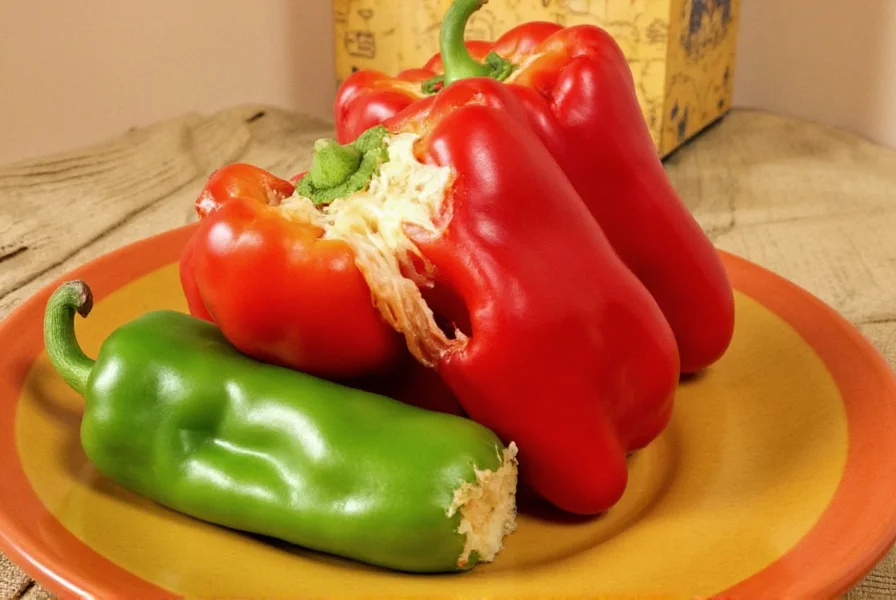
Understanding the Scoville Scale
The Scoville scale measures pepper heat in Scoville Heat Units (SHU), representing how much sugar water is needed to dilute capsaicin until heat is undetectable. Modern measurements use High-Performance Liquid Chromatography (HPLC) for accuracy, converting capsaicin concentration to SHU values. This scientific approach ensures reliable comparisons between peppers.
According to the USDA Agricultural Research Service, Scoville ratings are given as ranges because growing conditions significantly affect heat levels. Factors like climate, soil quality, and ripeness can cause variations of up to 300% in the same pepper variety.
Complete Pepper Scoville List
| Pepper Name | Scoville Heat Units (SHU) | Origin | Flavor Profile | Common Uses |
|---|---|---|---|---|
| Bell Pepper | 0 SHU | Mexico | Mild, sweet, crisp | Salads, sandwiches, stir-fries |
| Pimento | 100-500 SHU | South America | Sweet, fruity | Pimento cheese, stuffing |
| Pepperoncini | 100-500 SHU | Greece | Mild, tangy | Greek salads, sandwiches |
| Banana Pepper | 0-500 SHU | Central America | Sweet, slightly tangy | Pizzas, subs, pickling |
| Cubanelle | 0-1,000 SHU | Italy | Mild, sweet, thin walls | Stuffed peppers, sauces |
| Anaheim | 500-2,500 SHU | New Mexico | Mild, slightly sweet | Chili, roasting, salsas |
| Jalapeño | 2,500-8,000 SHU | Mexico | Grassy, bright | Salsas, nachos, pickling |
| Serrano | 10,000-25,000 SHU | Mexico | Sharp, crisp | Salsas, guacamole, hot sauces |
| Cayenne | 30,000-50,000 SHU | South America | Sharp, pungent | Hot sauces, seasoning blends |
| Thai Bird's Eye | 50,000-100,000 SHU | Thailand | Fruity, floral | Thai curries, stir-fries |
| Habanero | 100,000-350,000 SHU | Caribbean | Fruity, citrusy | Caribbean jerk, hot sauces |
| Scotch Bonnet | 100,000-350,000 SHU | Caribbean | Fruity, sweet, floral | Caribbean jerk, sauces |
| Rocoto | 50,000-100,000 SHU | Peru | Fruity, complex | Peruvian stews, sauces |
| Datil | 100,000-300,000 SHU | Florida | Fruity, citrusy | Florida hot sauces, seafood |
| Ghost Pepper (Bhut Jolokia) | 855,000-1,041,427 SHU | India | Fruity, smoky | Extreme hot sauces, challenges |
| Carolina Reaper | 1,400,000-2,200,000 SHU | South Carolina | Fruity, sweet, smoky | Extreme hot sauces, challenges |
| Trinidad Moruga Scorpion | 1,200,000-2,000,000 SHU | Trinidad | Fruity, floral | Extreme hot sauces |
| 7 Pot Douglah | 1,000,000-1,800,000 SHU | Trinidad | Smoky, earthy | Extreme hot sauces |
| 7 Pot Primo | 1,000,000-1,500,000 SHU | Trinidad | Fruity, sweet | Extreme hot sauces |
| Naga Viper | 1,349,000 SHU | UK | Fruity, smoky | Extreme hot sauces |
| Chocolate Bhut Jolokia | 1,000,000-1,200,000 SHU | India | Chocolatey, smoky | Extreme hot sauces |
| Red Savina Habanero | 350,000-577,000 SHU | Mexico | Fruity, intense | Hot sauces, salsas |
| Fatalii | 125,000-400,000 SHU | Zambia | Citrusy, floral | African sauces, marinades |
| Piri Piri | 50,000-175,000 SHU | Africa | Fruity, tangy | Portuguese chicken, sauces |
| Tabasco | 30,000-50,000 SHU | USA | Fruity, vinegary | Tabasco sauce, Bloody Marys |
| Chipotle | 2,500-8,000 SHU | Mexico | Smoky, earthy | Chili, adobo sauces |
| Guajillo | 2,500-5,000 SHU | Mexico | Earthy, berry-like | Mole sauces, adobo |
| Ancho | 1,000-1,500 SHU | Mexico | Prune, raisin | Mole sauces, stews |
| Passilla | 1,000-2,500 SHU | Mexico | Dark fruit, coffee | Mole sauces, salsas |
| Mulato | 2,500-3,000 SHU | Mexico | Chocolate, tobacco | Mole sauces, stews |
| New Mexico | 500-2,500 SHU | New Mexico | Mild, earthy | Chili con carne, roasting |
| Hungarian Wax | 1,000-15,000 SHU | Hungary | Citrusy, bright | Pickling, stir-fries |
| Fresno | 2,500-10,000 SHU | USA | Fruity, similar to jalapeño | Salsas, sauces, garnishes |
| Thai | 50,000-100,000 SHU | Thailand | Fruity, floral | Thai curries, stir-fries |
| Bird's Eye | 50,000-100,000 SHU | Thailand | Fruity, floral | Thai curries, stir-fries |
| Thai Dragon | 50,000-100,000 SHU | Thailand | Fruity, floral | Thai curries, stir-fries |
| Aleppo | 10,000 SHU | Syria | Fruity, mild | Middle Eastern dishes, seasoning |
| Calabrian | 25,000-40,000 SHU | Italy | Fruity, smoky | Pasta sauces, pizza |
| Pequin | 30,000-60,000 SHU | Mexico | Fruity, nutty | Hot sauces, salsas |
| Tepin | 50,000-100,000 SHU | Mexico | Fruity, floral | Hot sauces, salsas |
| Poblano | 1,000-1,500 SHU | Mexico | Earthy, mild | Chiles rellenos, sauces |
| Chipotle | 2,500-8,000 SHU | Mexico | Smoky, earthy | Chili, adobo sauces |
| Guajillo | 2,500-5,000 SHU | Mexico | Earthy, berry-like | Mole sauces, adobo |
| Ancho | 1,000-1,500 SHU | Mexico | Prune, raisin | Mole sauces, stews |
| Passilla | 1,000-2,500 SHU | Mexico | Dark fruit, coffee | Mole sauces, salsas |
| Mulato | 2,500-3,000 SHU | Mexico | Chocolate, tobacco | Mole sauces, stews |
| California Pepper | 0-1,000 SHU | USA | Mild, sweet | Salsas, garnishes |
| Manzano | 12,000-30,000 SHU | Mexico | Fruity, apple-like | Salsas, sauces |
| Chiltepin | 50,000-100,000 SHU | Mexico | Fruity, floral | Hot sauces, salsas |
| Bird's Eye | 50,000-100,000 SHU | Thailand | Fruity, floral | Thai curries, stir-fries |
| Malagueta | 60,000-100,000 SHU | Brazil | Fruity, citrusy | Brazilian dishes, moqueca |
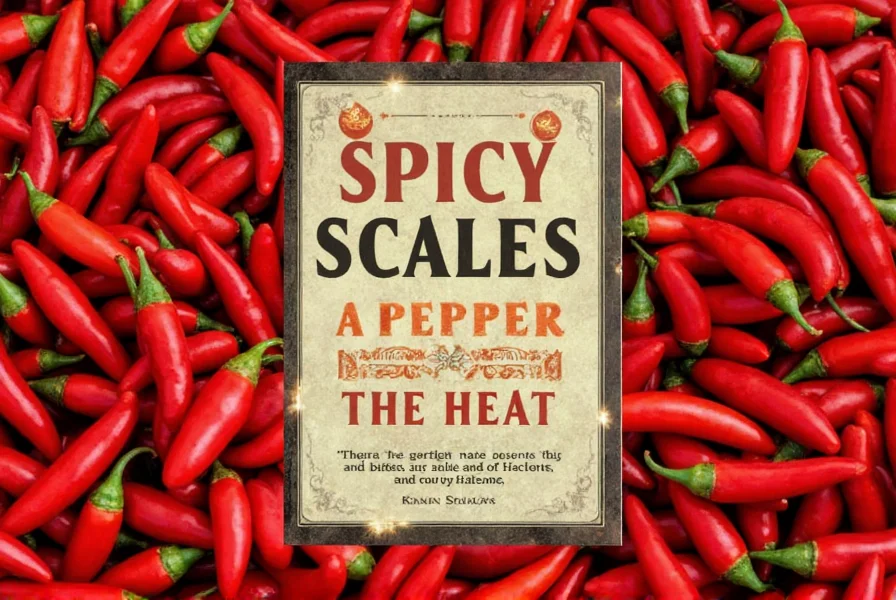
Cooking Tips with Spicy Peppers
When working with spicy peppers, follow these science-backed safety and cooking techniques:
- Wear nitrile gloves: Capsaicin binds to skin proteins, causing irritation. Nitrile gloves provide better protection than latex for handling super-hot peppers.
- Use ventilation: When cutting hot peppers, use a range hood or open windows. Capsaicin particles can irritate eyes and respiratory system.
- Start with small amounts: For peppers above 50,000 SHU, begin with 1/8 teaspoon and taste before adding more. Capsaicin effects are cumulative.
- Remove seeds and membranes: 80% of capsaicin is concentrated in the white pith and seeds. Removing these reduces heat by 50-70% while preserving flavor.
- Balance heat with dairy: Casein in milk and yogurt binds to capsaicin, neutralizing heat. Use whole milk for best results.
- Don't use water: Water spreads capsaicin rather than neutralizing it. For skin exposure, use soap and cool water, or specialized capsaicin removers.
Buying Guide for Spicy Peppers
1. Fresh Peppers
When purchasing fresh peppers, look for firm, glossy skin with no soft spots. According to USDA guidelines, peppers with intact stems retain freshness longer. For heat consistency, choose peppers with uniform color - green peppers are typically milder than their ripe red counterparts.
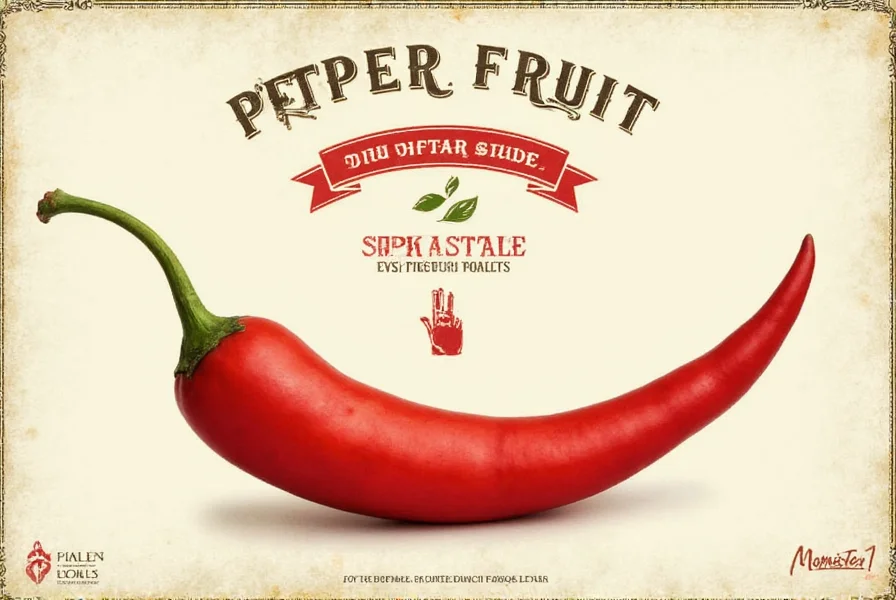
2. Dried Peppers
High-quality dried peppers should have a strong aroma and vibrant color. Avoid peppers with white spots (mold) or dull appearance. For maximum heat retention, store dried peppers in airtight containers away from light. The USDA recommends using dried peppers within 6 months for best flavor.
3. Pre-Made Hot Sauces
Check ingredient labels for natural ingredients. Top-quality hot sauces list peppers as the first ingredient, followed by vinegar and spices. Avoid sauces with excessive additives like corn syrup or artificial flavors. For authenticity, look for sauces made with specific pepper varieties (e.g., "made with Habanero peppers") rather than generic "hot pepper".
4. Specialty Products
When buying chili flakes or powders, check the Scoville rating on the packaging. Reputable brands provide specific SHU ranges rather than vague "hot" or "extra hot" labels. For cooking, choose flakes with visible pepper seeds for maximum heat, or seedless flakes for milder flavor.
Frequently Asked Questions
What is the most accurate way to measure pepper heat today?
Modern Scoville measurements use High-Performance Liquid Chromatography (HPLC), which precisely measures capsaicin concentration in parts per million. This scientific method converts to Scoville Heat Units using the formula: SHU = ppm capsaicin × 15. The USDA Agricultural Research Service confirms this is 100 times more accurate than the original human taste panel method, with results typically within 5% of the actual heat level.
How do growing conditions affect pepper heat levels?
According to research from the New Mexico State University Chile Pepper Institute, several factors influence pepper heat:
- Water stress: Peppers grown with limited water produce 30-50% more capsaicin as a defense mechanism
- Temperature: Optimal heat development occurs at 75-85°F (24-29°C); temperatures above 90°F (32°C) reduce capsaicin production
- Ripeness: Fully ripe peppers (red, orange, yellow) contain 20-40% more capsaicin than green peppers of the same variety
- Soil nutrients: Potassium-rich soil increases capsaicin production by 15-25%
- Altitude: Peppers grown at higher elevations (above 5,000 feet) typically have 10-20% higher heat levels
This is why Scoville ratings are always given as ranges rather than fixed numbers - the same pepper variety can vary significantly based on growing conditions.
What are the safest handling practices for super-hot peppers like Carolina Reaper?
When handling peppers above 1,000,000 SHU, follow these CDC-recommended safety protocols:
- Wear nitrile gloves (latex is less effective against capsaicin)
- Use safety goggles to protect eyes from airborne particles
- Work in a well-ventilated area or use a fume hood
- Use dedicated cutting boards and utensils (never use for other foods immediately after)
- Never touch your face, especially eyes and nose, while handling
- After handling, wash hands with soap and cool water for 30 seconds
- For skin exposure, use dish soap or specialized capsaicin removers (not just water)
- For eye exposure, flush with saline solution for 15 minutes and seek medical attention
According to the American Association of Poison Control Centers, over 2,000 pepper-related injuries are reported annually, mostly from improper handling of super-hot varieties.
How can I reduce heat in a dish that's become too spicy?
Based on food science research from the Institute of Food Technologists, these methods effectively neutralize capsaicin:
- Dairy products: Casein in milk, yogurt, or sour cream binds to capsaicin molecules. Whole milk is most effective (40% heat reduction).
- Fats: Coconut milk, avocado, or olive oil dissolve capsaicin. Add 1-2 tablespoons per serving for 30-50% heat reduction.
- Acid: Lemon or lime juice (1-2 teaspoons per serving) helps balance heat perception.
- Sugar: A small amount of honey or sugar (1/2 teaspoon per serving) counteracts heat sensation.
- Starches: Rice, potatoes, or bread absorb capsaicin. Add 1/4 cup per serving for 20-30% heat reduction.
Important: Water is ineffective and spreads capsaicin. Alcohol also doesn't neutralize heat - it may increase burning sensation. The most effective approach is prevention by adding peppers gradually and tasting as you cook.
Do hotter peppers have less flavor than milder ones?
No - in fact, many super-hot peppers have more complex flavor profiles. According to sensory analysis research from the University of California, Davis:
- Habaneros contain 47 distinct flavor compounds including limonene (citrus), linalool (floral), and myrcene (earthy)
- Carolina Reapers have over 60 flavor compounds including furaneol (caramel), hexanal (grassy), and beta-ionone (floral)
- Ghost Peppers contain high levels of terpenes that create sweet, smoky notes before the heat hits
The perception that hotter peppers lack flavor comes from capsaicin overwhelming taste receptors. When used appropriately, super-hot peppers add remarkable depth to dishes. Professional chefs like Chef José Andrés use Carolina Reapers in small quantities for their complex fruitiness, not just heat.
What are the top 5 peppers for everyday cooking?
Based on culinary applications and versatility, these peppers offer the best balance of heat and flavor for most home cooks:
- Jalapeño (2,500-8,000 SHU): The "gateway pepper" with bright, grassy flavor. Perfect for salsas, nachos, and stuffed peppers. Offers consistent heat without overwhelming most palates.
- Habanero (100,000-350,000 SHU): Distinctive fruity flavor with complex citrus notes. Essential for Caribbean jerk, hot sauces, and adding depth to stews. Use sparingly for maximum flavor impact.
- Cayenne (30,000-50,000 SHU): Clean, sharp heat with minimal flavor interference. Ideal for seasoning blends, hot sauces, and adding heat without altering dish flavor profiles.
- Guajillo (2,500-5,000 SHU): Earthy, berry-like flavor with mild heat. Perfect for mole sauces, adobo, and adding depth to Mexican dishes without excessive heat.
- Chipotle (2,500-8,000 SHU): Smoky, earthy flavor from smoked jalapeños. Excellent for chili, barbecue sauces, and adding depth to roasted vegetables.
These peppers represent the "sweet spot" for most home cooking - enough heat to be interesting but not so intense that they dominate dishes or require special handling precautions.
Conclusion
The Scoville scale provides an essential framework for understanding pepper heat levels, but true mastery comes from knowing how to apply this knowledge in cooking. By selecting peppers based on their specific SHU range and flavor profile, you can create dishes with perfect heat balance and complexity. Remember that heat is just one aspect of pepper flavor - many super-hot varieties offer remarkable fruitiness, smokiness, and floral notes that elevate dishes when used properly.
Whether you're a home cook or professional chef, this complete Scoville guide provides the scientific foundation and practical knowledge needed to confidently work with peppers of all heat levels. Start with milder varieties and gradually explore hotter options as your palate develops. With proper handling techniques and understanding of flavor profiles, you can unlock the full potential of chili peppers in your cooking.

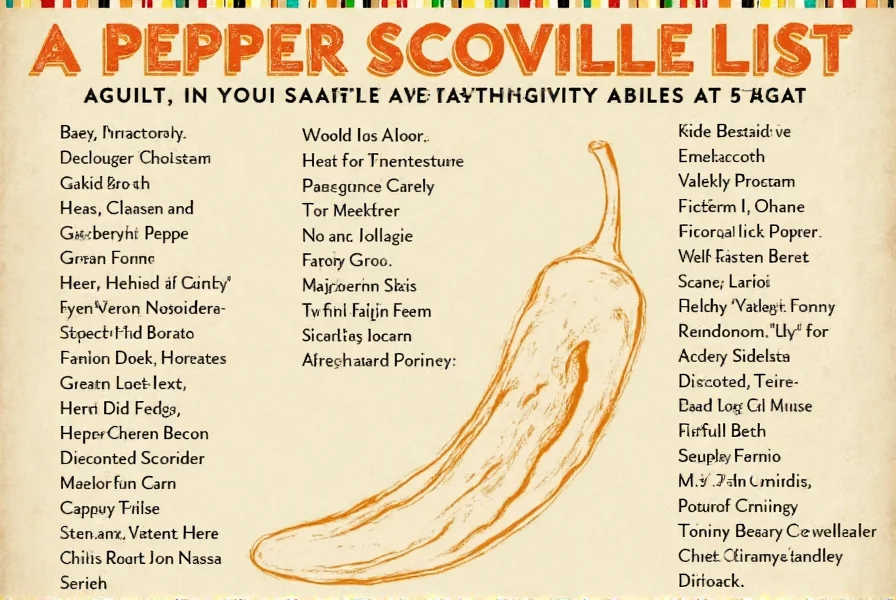

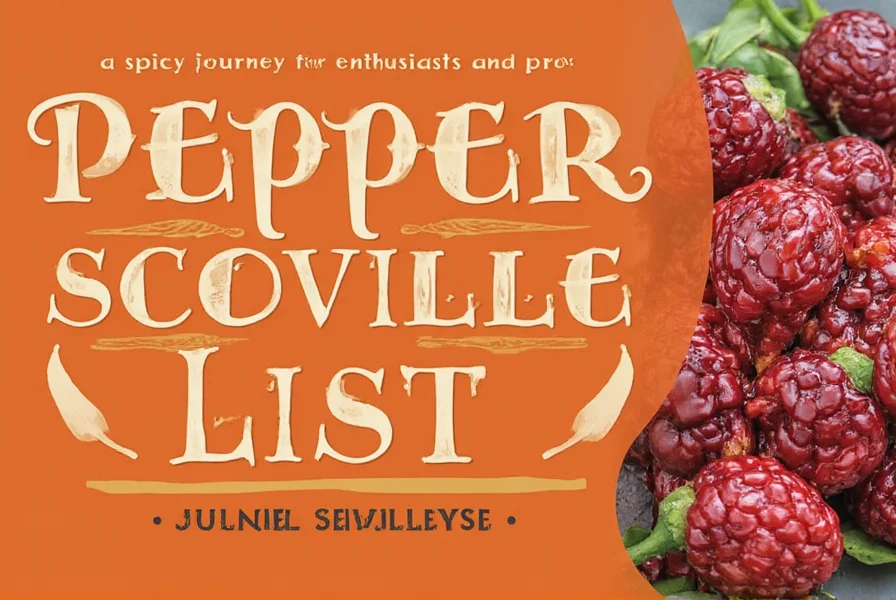









 浙公网安备
33010002000092号
浙公网安备
33010002000092号 浙B2-20120091-4
浙B2-20120091-4